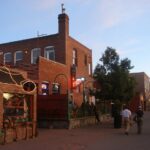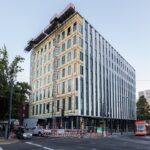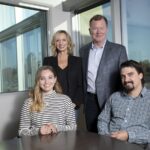Portland State University reimagines its School of Business.
Today’s business environment requires people to work collaboratively and stay connected through technology. Business schools try to prepare students for these realities by mimicking them as best they can in classrooms and through group projects. But if the physical space isn’t conducive to these types of activities, it can be a real struggle.
That was the boat Portland State University’s School of Business was in until recently. “Our last building was built in the 1970s and was very similar to other buildings at state colleges – dark and square, with nowhere for students to congregate and work in teams,” said Cliff Allen, the school’s dean. “They basically had to come in, go to class and leave. If they had to work on a team presentation or case work, they had to go sit in someone’s car.” Faculty offices were segregated from the student areas, which didn’t encourage mingling between the two groups, and there was no community gathering space.
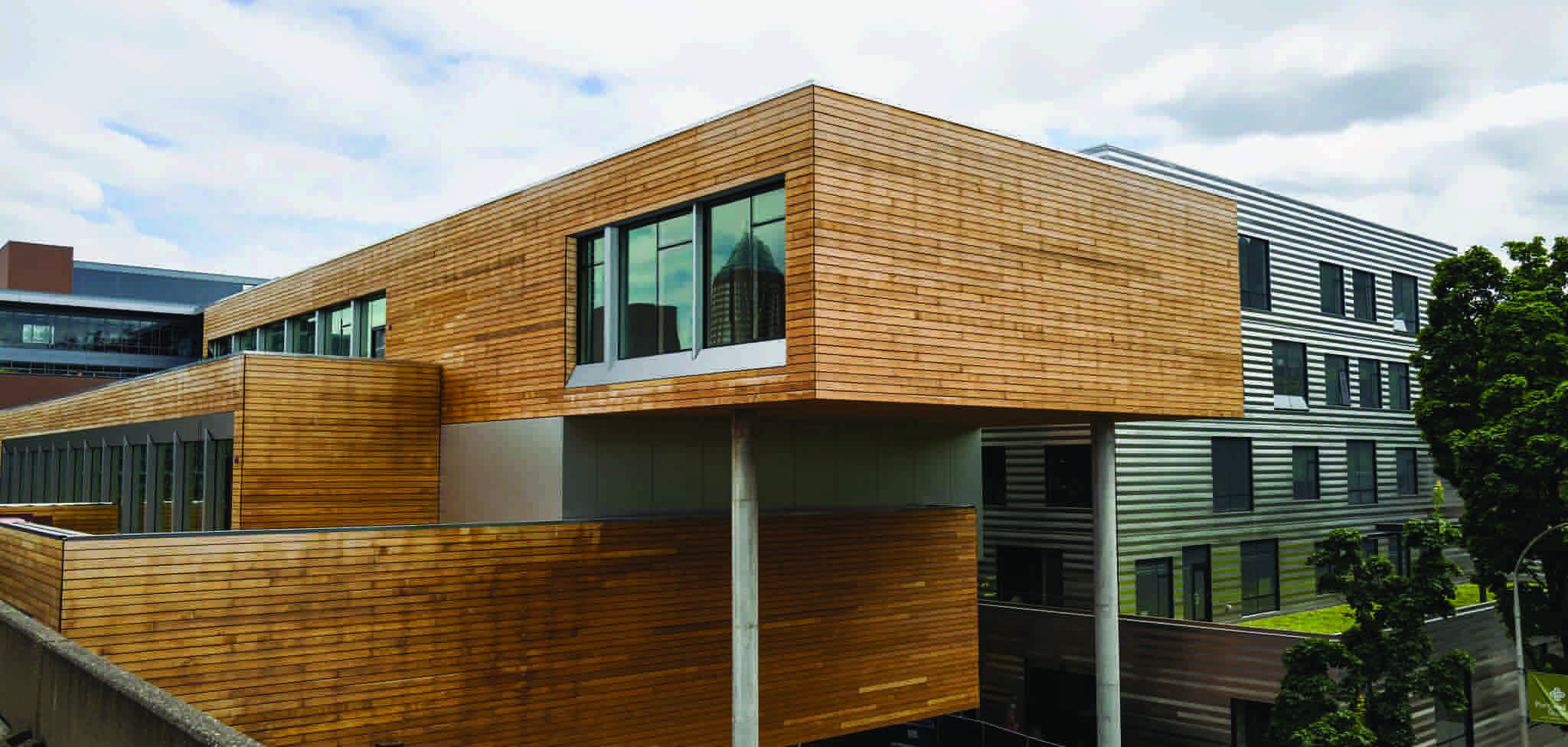
All that’s changed with the new Karl Miller Center, which opened at the beginning of the school year. Working with architects Behnisch Architekten and SRG Partnership and general contractor Skanska USA, The School of Business completely renovated its existing facility. The team increased the building’s footprint by 72 percent and transformed it into a modern, light-filled structure that does a much better job of fulfilling students’ needs.
“Now we have rooms just for students where they can work on team projects,” said Allen. “We’ve outfitted them with technology so they can dial in other people from across the world if there are people they want to interview or collaborate with.” Classrooms are outfitted with similar technology so students or professors can connect with speakers as needed. “There are lots of informal spaces for congregating. That’s completely changed the feeling of the building. Students don’t leave now. I can’t tell you what a difference that is.”
An atrium in the six-story building is available for community gatherings hosted by The School of Business or other groups. An outdoor space provides room for gatherings or even class presentations, and an abundance of windows, providing natural light on even Portland’s darkest days.
The Karl Miller Center is LEED platinum certified, an essential designation at a school noted for its sustainability curriculum. Notable features include a passive heating and cooling system, green roofs and siding made from Alaskan yellow cedar, which is certified by the Forest Stewardship Council. The passive heating system is also an advantage because it allows classrooms temperature to be individually regulated rather than controlled by one central boiler, Allen noted.
The building was funded through a combination of individual donations and bonds. Over a 15-year period donors gave anywhere from $100 to over $9 million – the latter coming from School of Business alum Rick Miller and his wife Erika. They chose to name the building after Miller’s grandfather, Karl Miller, who was a World War II veteran, Portland firefighter and entrepreneur. After raising an estimated $24 million in private funds, the university secured $40 million in state-backed bonds. No student fees were used.
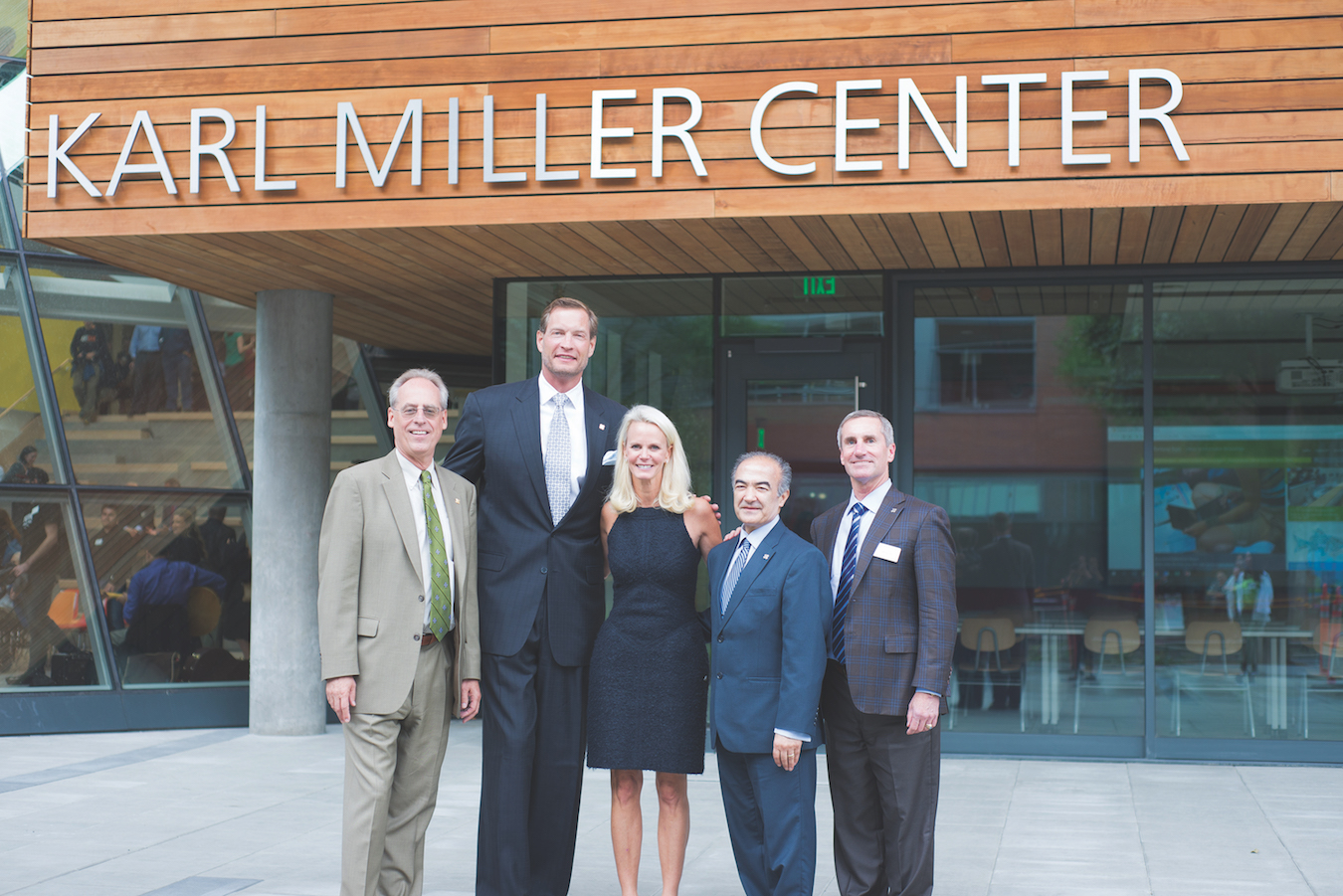 Former PSU President Wim Wiewel, Rick and Erika Miller, current PSU President Rahmat Shoureshi and PSU Dean Cliff Allen
Former PSU President Wim Wiewel, Rick and Erika Miller, current PSU President Rahmat Shoureshi and PSU Dean Cliff Allen
David Dixon, a 40-year-old undergraduate student studying human resources, had high praise for the new building. “When I first came to Portland State, it was kind of the closed off,” he said of the school. “You’d have to make an appointment to see your professors because they were locked in their offices. Now I’m always running into professors and we can interact more regularly. It’s building more of a community, where before it was lacking community. You can’t sit somewhere for five minutes without running into a classmate or professor. The flow of the building really works in favor of the students.”
Along with the structural changes, who the building houses has changed as well. Non traditional students now make up the majority at The School of Business. “We’re basically 50 percent white, which is a dramatic shift from even five years ago,” Allen said. “We have a huge international community, huge Latino population and are increasing in African American students. The average age of our students is 27 years old. Our MBA program is almost 60 percent women. We have a significant population of veterans and a significant LGBTQ community, which we’ve embraced through pronoun training, for instance.” 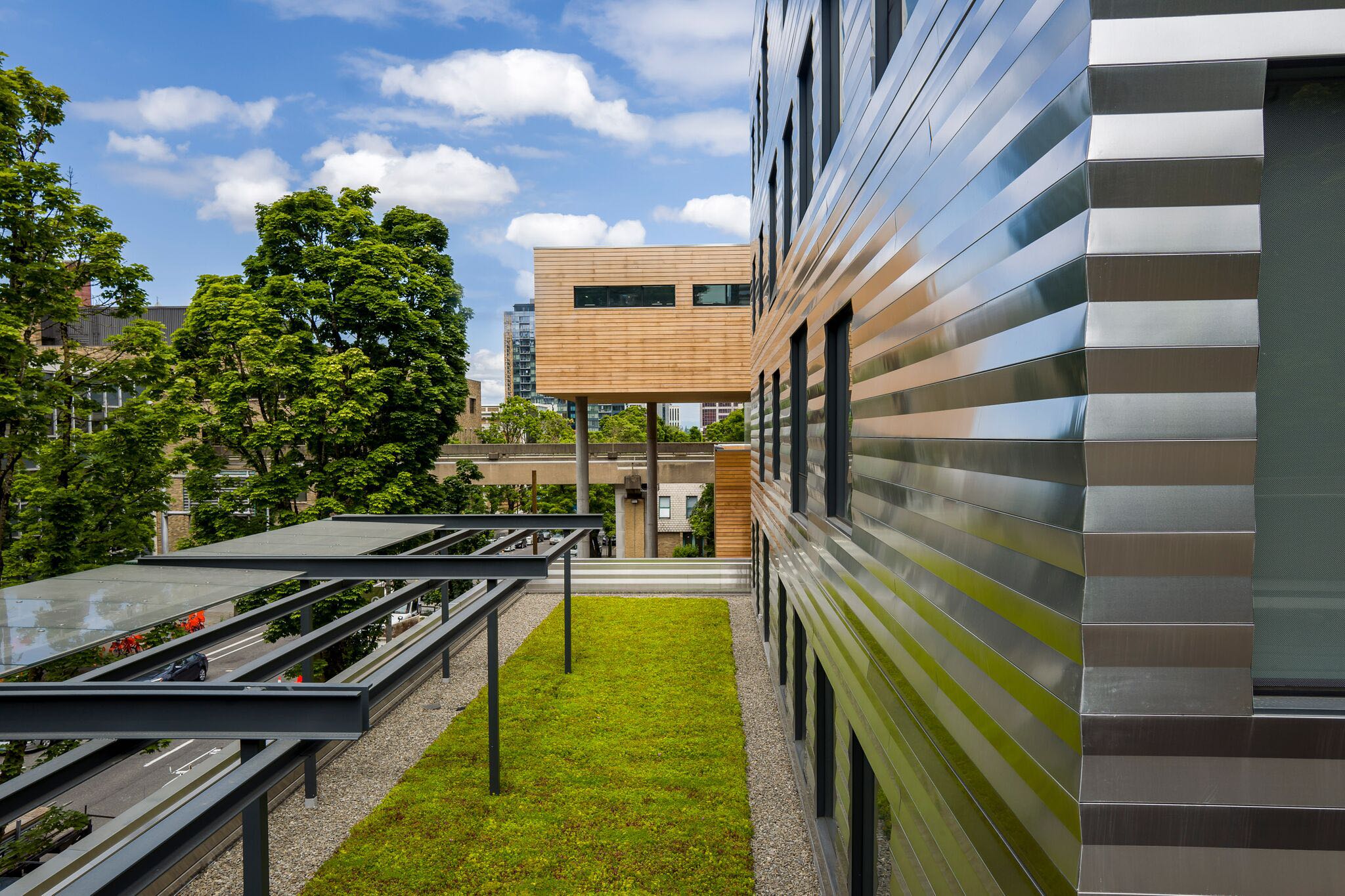
This diversity is something Portland State is extremely proud of, and the changes in their physical space is just one example of their efforts to evolve with the needs of their student population. “We hired advisors who look like our students and understand our student’s needs,” Allen said. “We have homeless students, and they have to have a place where they can study and feel safe.” The emphasis on study and meeting spaces comes in part because students can’t go back to their dorm rooms in the middle of the day. The majority live somewhere else in the city or don’t have a home at all.
“Our students are changing so fast, and it’s changed education,” Allen said. “If universities aren’t worried about this stuff they’re falling behind.”
The Karl Miller Center is subtly shifting the general feeling on campus as well. “The business school is right in the middle of campus,” Allen said. “They built this building purposely where you can come in the front door and go right out the back door.” Students from all disciplines still walk through to gawk at the brand-new space, but they also come in because they know it’s a safe, learning-centered space for them.
This sentiment is so important to The School of Business that they’re using the hashtag #KMCOpenDoors when they talk about the building online. It’s their way of indicating that their space is open to everyone regardless of color, ethnicity, gender or gender identity, or even student status. ss of color, ethnicity, gender or gender identity, or even student status.
Brand stories are paid content articles that allow Oregon Business advertisers to share news about their organizations and engage with readers on business and public policy issues. The stories are produced in house by the Oregon Business marketing department. For more information, contact associate publisher Courtney Kutzman.



